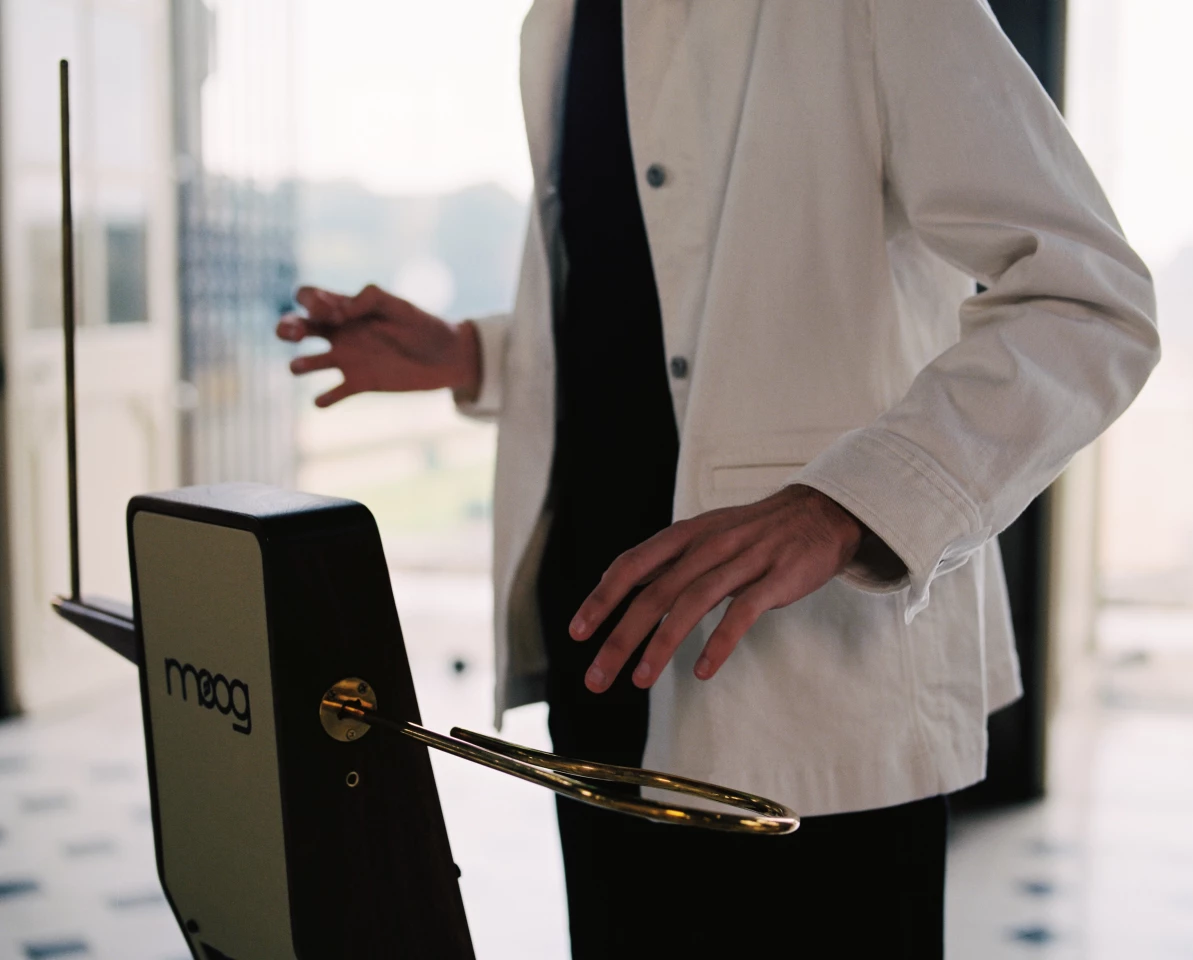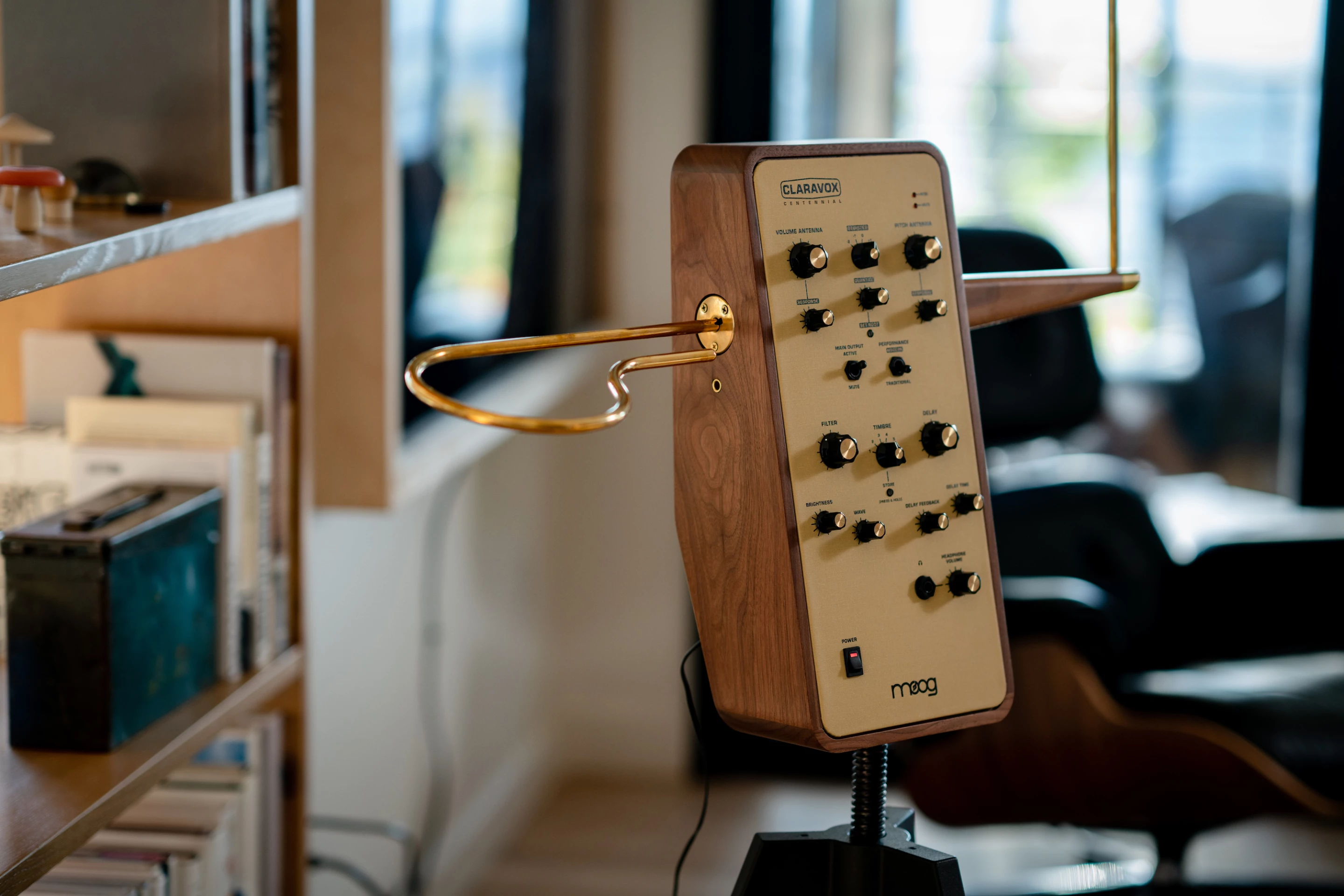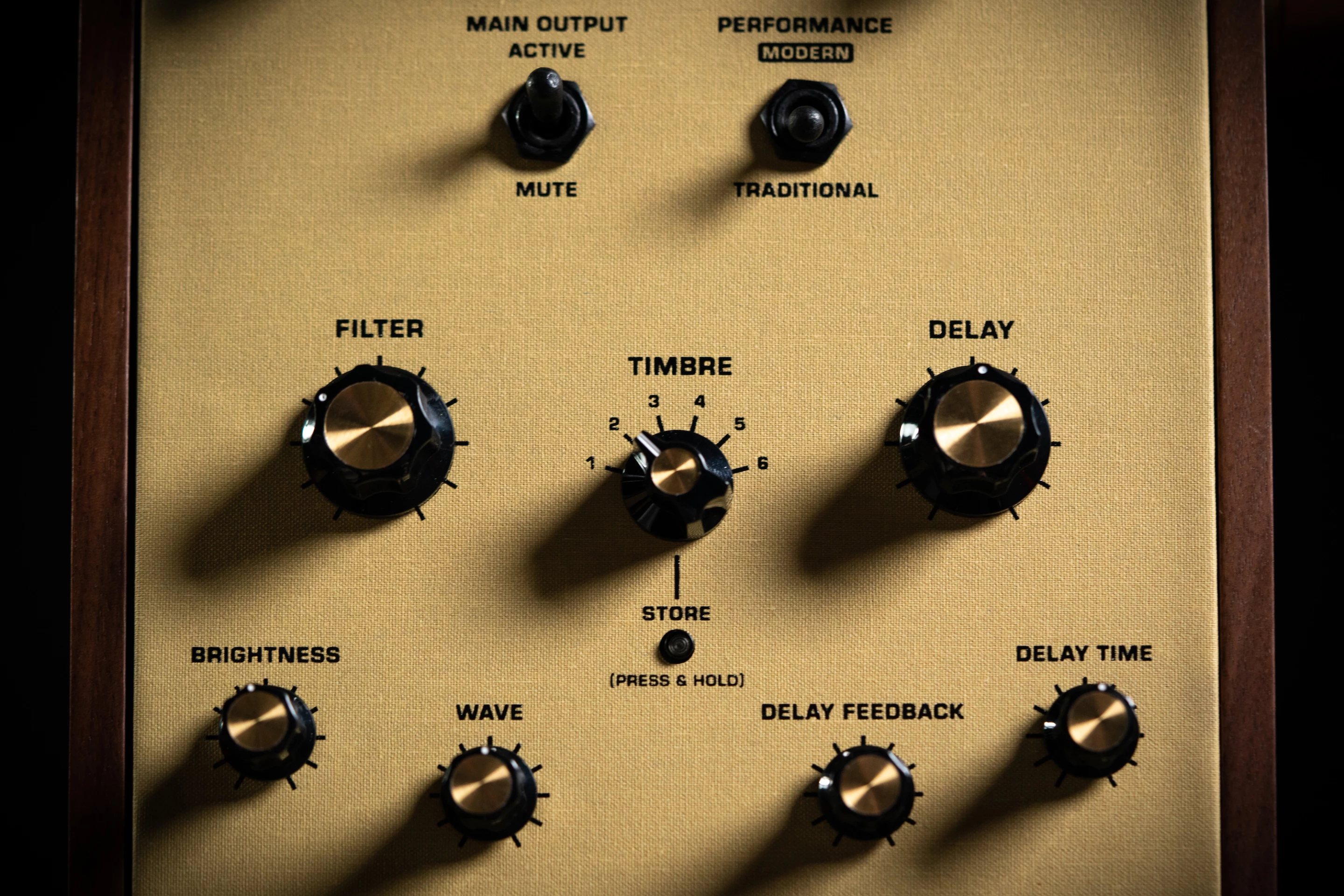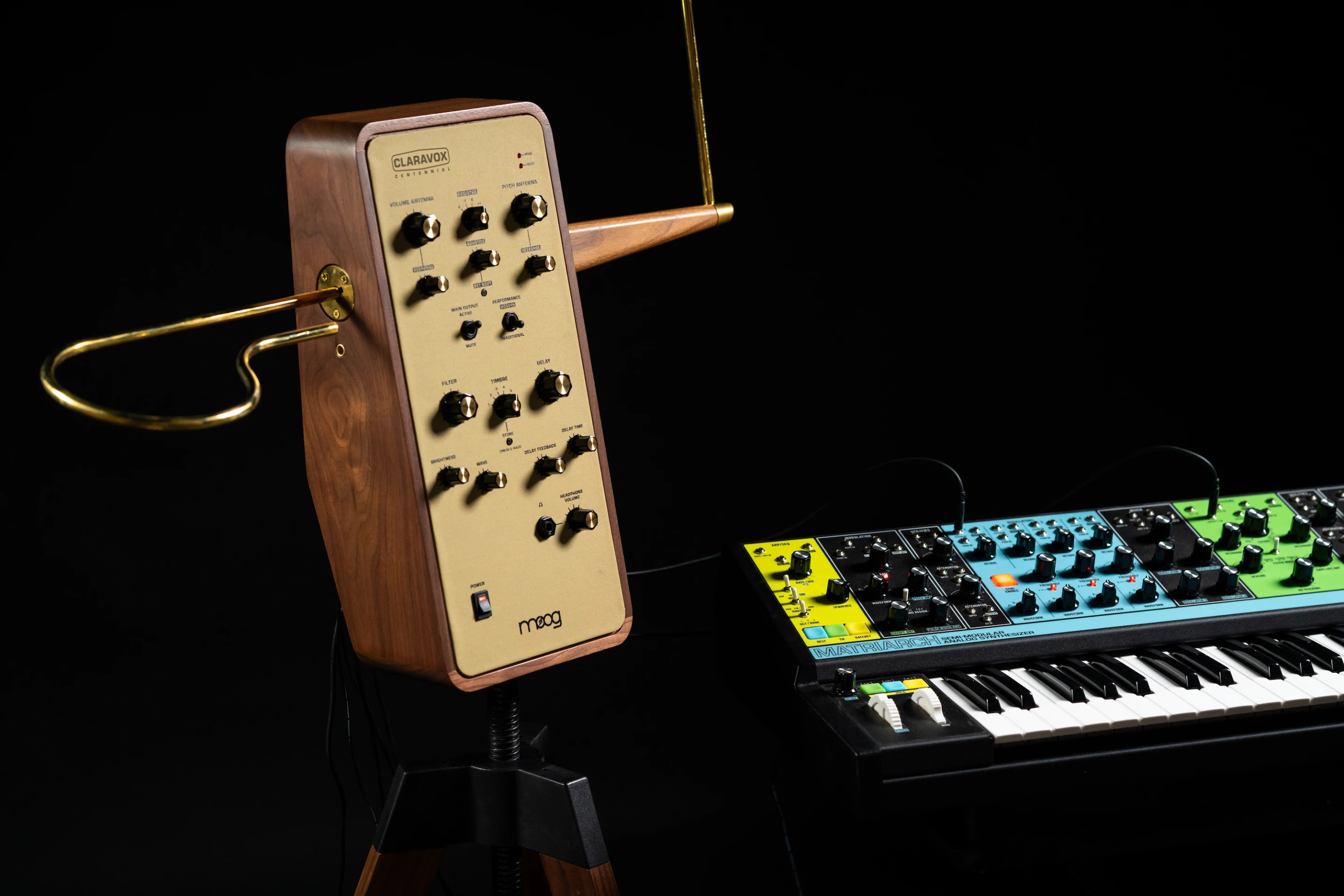Fans of classic B-movies will likely be quite familiar with the eerie, other-worldly tones of the theremin. This month marks the 100th anniversary of its invention, and synth icon Moog Music is celebrating with the special edition Claravox Centennial.
The brainchild of a Russian physicist named Lev Sergeyevich Termen, better known as Leon Theremin, the instrument that now wears his name came out of Soviet research into proximity sensors. The young physicist had modified a device that measured gas density to offer both visual and audio value readouts, and noticed that the proximity of his body to the device would cause the tone output to change.
He subsequently used his proficiency as a cellist to play a simple tune without any physical contact, to the delight and wonderment of his colleagues, and decided to develop the device into an instrument. After touring Europe with his invention, Theremin settled in the US in the late 1920s and patented the device, granting RCA commercial production rights shortly after. Violin prodigy, and fellow Russian, Clara Rockmore was introduced to the device, and switched to Theremin's invention as her primary instrument.
Early instruments saw radio tubes housed in a control box that had metal antennas attached left and right. The tubes produced oscillations at slightly different low frequencies. Looking somewhat like the conductor of an orchestra, the player stands in front of the instrument and controls output pitch by moving a hand close to or away from one antenna, and amplitude in the same way but at the other antenna. The signals are amplified and output to a speaker.
The RCA Thereminvox only enjoyed a short production run, and it would be decades before a young Robert Moog built his first model from plans published in an issue of Electronics World. By 1954, Bob and his father were building and selling theremins from the family home in Queens, New York, and the R.A. Moog Company was founded to market the instrument kits. And though perhaps better known for its modular synthesizers, Moog Music still makes and sells theremins to this day.

To mark the 100th anniversary of its invention, the company has launched "a celebration of the theremin's past, present and future." The Claravox Centennial – named after Clara Rockmore, the original theremin virtuoso – features brass antennas, control panels bound in cloth, and an attractive walnut cabinet.
Players can switch between traditional and modern performance modes, the former featuring heterodyne analog oscillators and the latter built around multimode DSP oscillators with assignable scales, quantization and octave ranges. The devices sonic character and sound sculpture possibilities come courtesy of the analog wave-shaping circuit from Moog's Etherwave Pro, and there's a built-in analog delay to add some warmth.
There are numerous controls available on the front panel for adjusting the tone, adding delay, applying filters, saving presets and controlling the volume and pitch antennas. The device can be integrated into DAW workflows or used to control external hardware via DIN, MIDI, USB and CV inputs and outputs, and there's a dedicated software editor available for under-the-hood control.
The Claravox Centennial looks like a fitting tribute for the 100th anniversary of Leon Theremin's invention. It's up for pre-order from today for US$1,499, with shipping expected to start in December. French musician Grégoire Blanc can be seen performing Debussey's Clair de Lune in the video below.
Product page: Claravox Centennial









